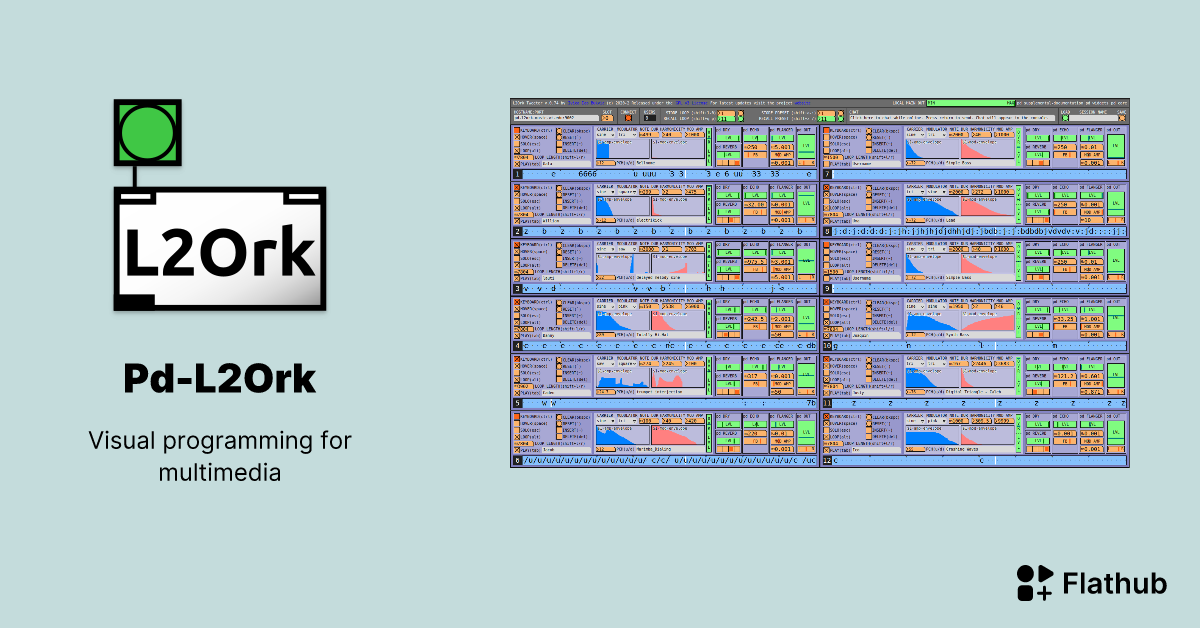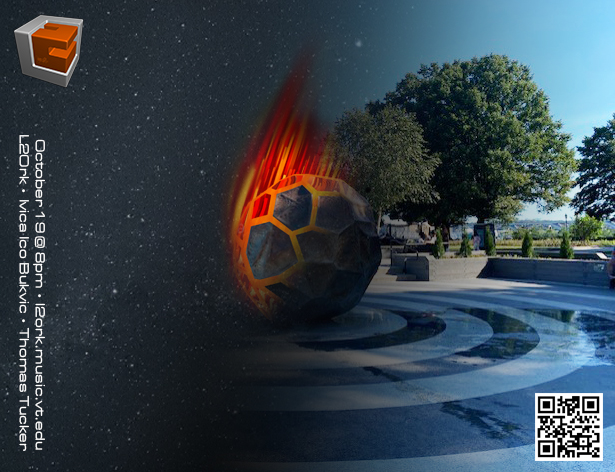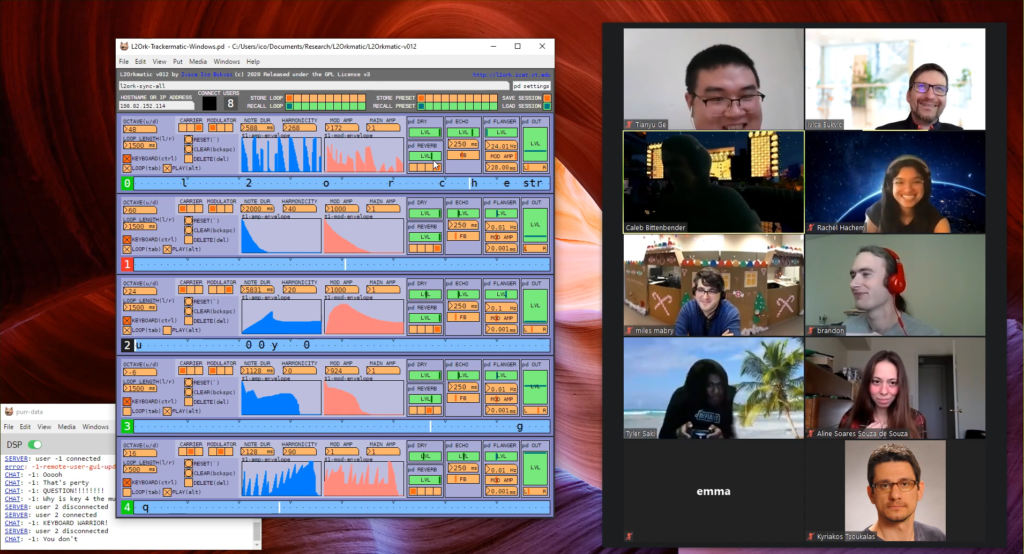After years of development, the Pd-L2Ork developer community is thrilled to announce immediate availability of the WebPdL2Ork open BETA that is capable of running just about any patch created using Pd-L2Ork inside a browser. Simply upload your patch to a Web-accessible location and point your browser to http://pd-l2ork.music.vt.edu:3000?url=<URL-to-your-patch>
All related subpatches and abstractions will be accessible as long as they are in the path. The main patch will be stretched across the browser window. Subpatches may be visible as floating windows as long as their location has been saved within the box of the original patch. Some adjustments may be necessary to the subpatch locations, or they can be even embedded as graph-on-parent-enabled subpatches on the main patch window.
To test out patches already hosted on our page, please use links provided below. Select patches also have hidden shortcuts. For optimal experience, we recommend Google Chrome or Chromium.
VT Waves Project Learning Modules:
- Autotune (explore how an Adelle solo refrain would sound if sung on a single note;)
- Distortion (experiment with clipping an audio signal to create a guitar-like distortion)
- Phase Cancellation (learn how to cancel vocals from just about any mainstream pop tune by subtracting the right channel from the left with an inverted phase, use Shift+(1-3) to enable different sources)
- Pitch Relationships (explore frequency and pitch relationships; use Shift+A to enable pitch/frequency ratio viewer, and Shift+S to open spectrogram subpatch)
- Spectral Filtering (the iconic Forbidden Planet and FFT-based vocal filtering)
- Spectral Filtering Harmonics (explore decomposition and reconstruction of human voice into 10 sine tones; use keys ~ and 1-0 to toggle individual overtones, use Shift+(2-3) to enable other potential sound sources, toggle off a source to “pause” the signal, use Shift+4 to toggle slider that cross-fades betwen the original signal and reconstructed one)
And, if you have a beefy computer, you can also run the entire L2Ork Tweeter inside the browser (currently networking is not supported, so only the offline mode is available). Once loaded, consider opening one of the included saved sessions using the top-right corner session loading option by typing “grapevine-end” (without quotes) inside the “SESSION NAME” text box, pressing enter, and then clicking on the green “LOAD” button positioned immediately to the left of the text box. Please be patient with the loading process, as this is a CPU intensive patch (the pd-l2ork patch itself is in excess of 5MB). Once the session is loaded, it may take up to 10 seconds for the audio engine to catch-up before the audio dropouts stop. If dropouts do not stop, or if loading takes much longer, chances are your CPU is not fast enough to handle the patch running inside the browser (you can always explore the desktop version which is considerably less CPU intensive). Use Shift+(F1-F12) to take control of individual parts. For more info on L2Ork Tweeter, including tutorial videos, visit our Tweeter page.
What does not work: Gem library, networking objects (they load but do not work due to sandboxed nature of a web browser) and a few select (and not commonly used) 3rd-party libraries are not yet supported. Everything else should work out-of-box.
To learn how to build your own HTTPS-enabled web server: Visit the pd-l2ork github and read the emscripten/DOCUMENTATION.md file.
This project is sponsored by the Department of the Navy, Office of Naval Research under ONR award number N00014-22-1-2164. Any opinions, findings, and conclusions or recommendations expressed in this material are those of the author(s) and do not necessarily reflect the views of the Office of Naval Research.




